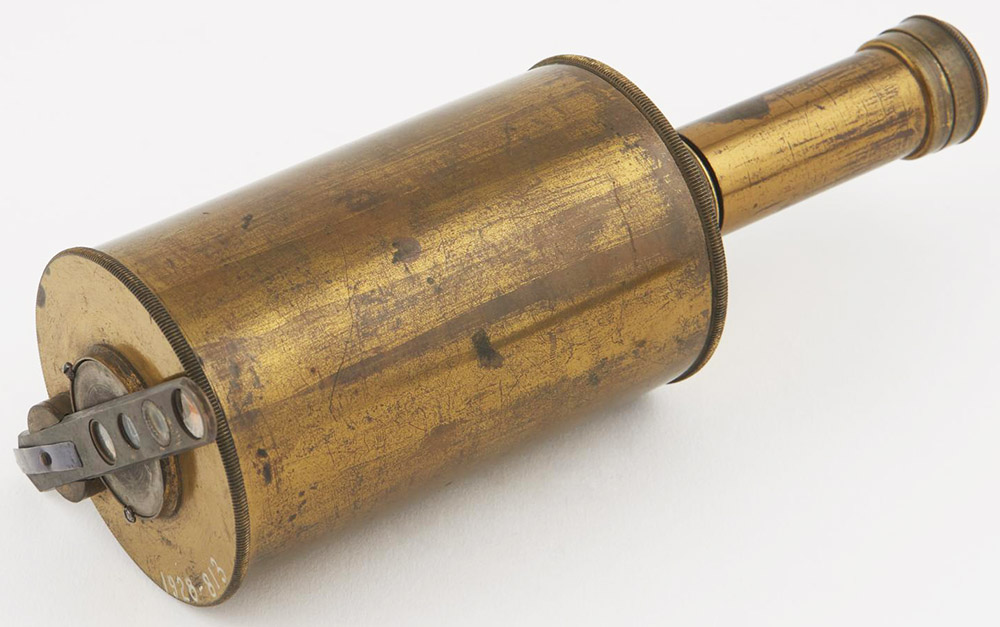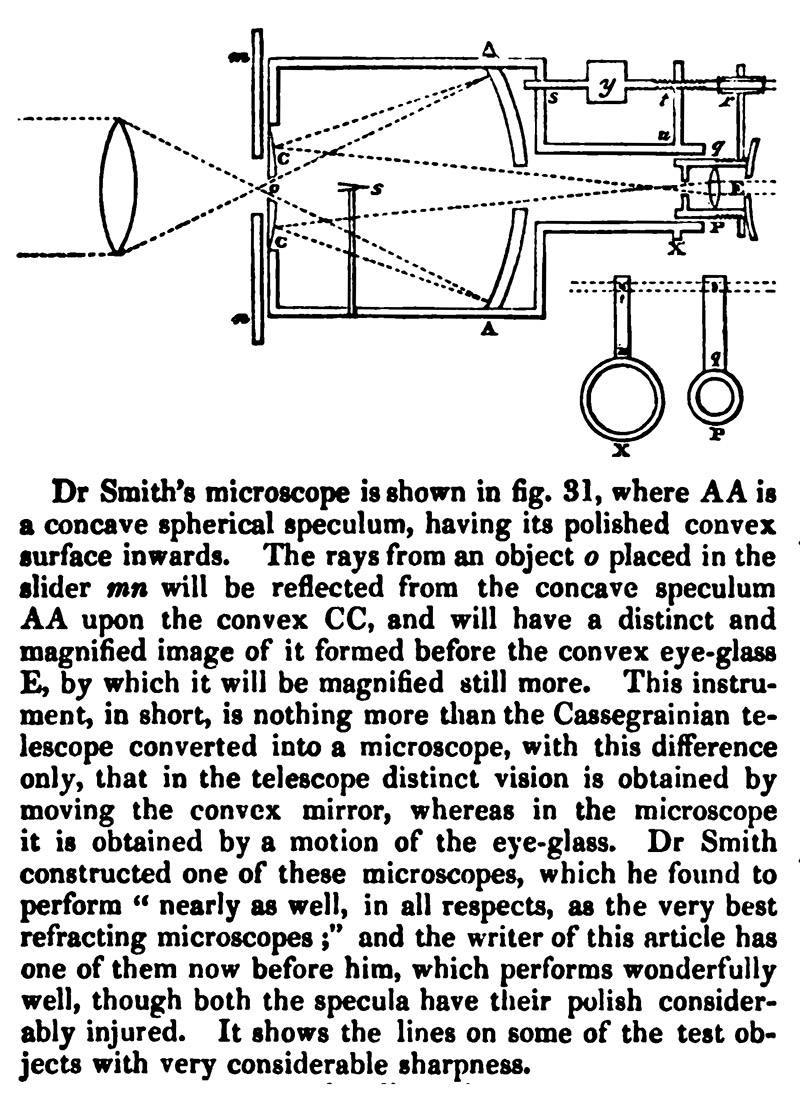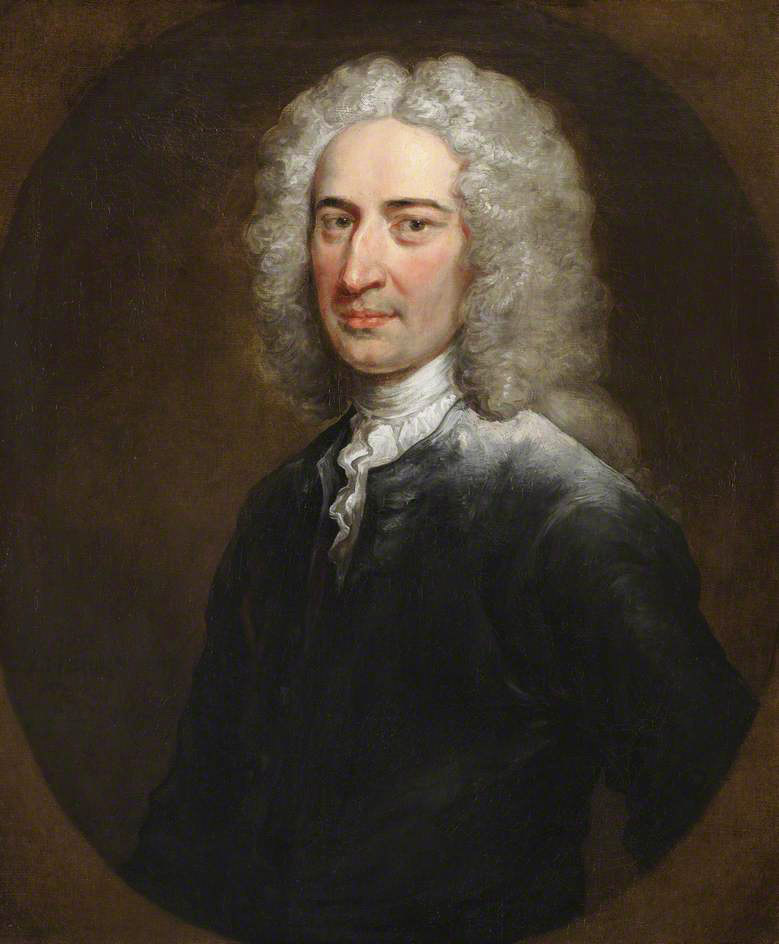Robert Smith, 1689 - 1768
by Brian Stevenson
last updated April, 2020
Robert Smith was a mathematician who served as Master and Plumian Professor of Astronomy and Experimental Philosophy at Trinity College, Cambridge University. Importantly for this series of essays, Smith developed an early microscope with very little chromatic aberration. While extending upon Isaac Newton’s investigations on light, Smith hit upon an idea of combining a concave mirror with convex glass lenses. From his 1738 A Compleat System of Opticks:
“Having made a few gross experiments with a concave metal that I had by me, whose focal distance was 2/3 inch, and with several convex eye-glasses applied to it, I found that the colours of objects in a reflecting microscope appeared much more beautiful and natural than in double refracting microscopes of the best sort; their proper colours being free from the mixture of other colours arising in refracting microscopes from the different refrangibility of rays”.
Writing for the Encyclopedia Britannica in the early 1800s, David Brewster wrote that he, “has one of them now before him, which performs wonderfully well, though both the specula have their polish considerably injured. It shows the lines on some of the test objects with very considerable sharpness”.

Figure 1.
A Smith-type reflecting microscope. Specimens are mounted on the brass slider that can be seen to the left. Clay and Court suggest that it was made by Frederick Herschel (1738-1822). Adapted for nonprofit, educational purposes from https://collection.sciencemuseumgroup.org.uk/objects/co8416/smiths-reflecting-microscope-brass-slide-attache .

Figure 2.
Cross section of a Smith-type microscope and description, from “Encyclopedia Britannica”, 1842. Light from the specimen moves from the left, with the observer’s eye to the right of the eye-glass “E”. Not noted in the description is the stop, “S”, which prevents light from passing directly from the specimen to the observer’s eye.

Figure 3.
Robert Smith, ca. 1730, by John Vanderbank (1694-1739).
Robert Smith was born in 1689 in Lea, Lincolnshire, where his father was Parish minister. The father, John Smith, had studied at Trinity College, Cambridge, and was particularly skilled in mathematics. Robert entered Trinity in 1708. His cousin, Roger Cotes, had previously been tutored by John Smith, and was appointed Plumian Professor of Astronomy and Experimental Philosophy at Trinity in 1707. Robert Smith moved up the academic ranks, and was appointed successor to Cotes’ professorship after that man’s death in 1716. Smith became Master of Trinity College in 1742. He did not marry.
In addition to his masterful A Compleat System of Opticks (1738), Smith was also celebrated for his mathematical analysis of music, Harmonics, or the Philosophy of Musical Sounds (1749).
Resources
Brewster, David (1832) Microscope, The Edinburgh Encyclopedia, Vol. 13, pages 243-244
Brewster, David (1842) Microscope, Encyclopedia Britannica, Vol. 15, page 43
Court, Reginald s., and Thomas H. Court (1932) The History of the Microscope, C. Griffin & Co., London, page 230, figure 160
Dictionary of National Biography (1898) Robert Smith, Smith, Elder & Co., London, Vol. 53, pages 109-111
Encyclopedia Britannica (1911) Smith, Robert, Vol. 25, page 268
Smith, Robert (1738) A Compleat System of Opticks, Vol. 1, page 279


